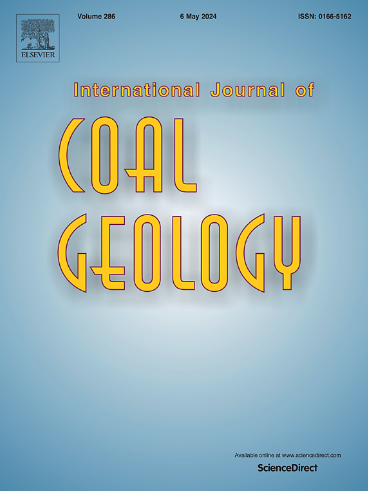The effect of high pressure on hydrocarbon generation from Type-I kerogen source rocks: Implications for petroleum system evolution
IF 5.7
2区 工程技术
Q2 ENERGY & FUELS
引用次数: 0
Abstract
This study examines the effect of high water pressure (up to 900 bar) on hydrocarbon generation from Type-I kerogen-rich source rocks and compares the results with previously observed effects on Type-II and Type-III kerogens. An immature Type-I oil shale sample from the Duwi Formation, Egypt, was pyrolysed under anhydrous, low-pressure hydrous, and high water-pressure conditions at 320 °C (end of bitumen generation) and 350 °C (oil window) for 6 and 24 h, respectively.
Pyrolysis at 320 °C showed that bitumen generation was promoted in the presence of water under low-pressure hydrous compared to anhydrous conditions but retarded at high water pressures. At 350 °C, oil generation was also retarded by increasing pressure, with maximum oil yield at 500 bar before dropping by 72% at 900 bar. Lower bitumen yields at 500 bar and higher yields at 900 bar confirm more retention of oil and bitumen in the rock at higher pressure. High water pressure systematically decreased hydrocarbon gas yields, with a more prominent effect at 320 °C because of temperature's dominant impact over pressure at 350 °C. Similarly, non-hydrocarbon gas yields decreased as water pressure increased, with maximum yields under anhydrous and low-pressure hydrous conditions. The retardation effect on bitumen generation was less significant than that on oil and gas generation.
This study highlights pressure's impact on petroleum generation, particularly in overpressured basins. Elevated pressures on Type-I kerogen source rocks retard oil expulsion, and the retained oil and bitumen within the rock can be directly cracked to gas, suggesting that under such conditions, oil yields may be lower, while unconventional gas resources are likely to be more abundant.
高压对ⅰ型干酪根烃源岩生烃的影响及其对油气系统演化的启示
本研究考察了高压(高达900 bar)对i型富干酪根烃源岩生烃的影响,并将结果与之前观察到的对ii型和iii型干酪根的影响进行了比较。来自埃及Duwi组的未成熟i型油页岩样品在320℃(沥青生成结束)和350℃(油窗)的无水、低压有水和高压条件下分别进行了6和24小时的热解。320°C热解表明,与无水条件相比,低压有水条件下沥青的生成促进,而高压条件下则阻滞。在350°C时,增加压力也会减慢产油速度,在500 bar时产油量最大,在900 bar时产油量下降72%。500 bar时较低的沥青产量和900 bar时较高的产量证实了在较高压力下岩石中的石油和沥青保留率较高。高压会系统性地降低油气产量,在320°C时效果更为显著,因为温度对350°C压力的影响更大。同样,非烃气产量随着水压的增加而下降,在无水和低压含水条件下产量最大。对沥青生成的阻滞作用不如对油气生成的阻滞作用显著。该研究强调了压力对油气生成的影响,特别是在超压盆地。ⅰ型干酪根烃源岩压力升高,排油速度减慢,岩内残留的石油和沥青可直接裂解成天然气,表明在这种条件下,石油产量可能较低,而非常规天然气资源可能更为丰富。
本文章由计算机程序翻译,如有差异,请以英文原文为准。
求助全文
约1分钟内获得全文
求助全文
来源期刊

International Journal of Coal Geology
工程技术-地球科学综合
CiteScore
11.00
自引率
14.30%
发文量
145
审稿时长
38 days
期刊介绍:
The International Journal of Coal Geology deals with fundamental and applied aspects of the geology and petrology of coal, oil/gas source rocks and shale gas resources. The journal aims to advance the exploration, exploitation and utilization of these resources, and to stimulate environmental awareness as well as advancement of engineering for effective resource management.
 求助内容:
求助内容: 应助结果提醒方式:
应助结果提醒方式:


